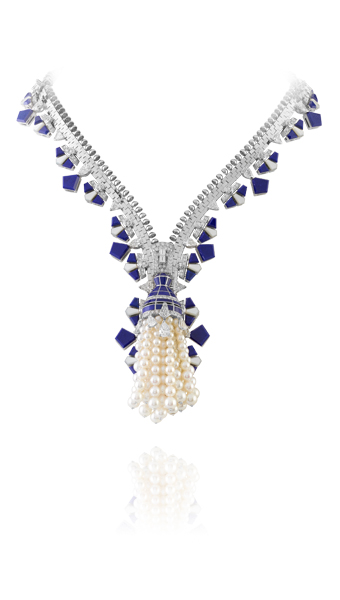
From changing cultural mindsets and innovative designs to forward-thinking digital promotional strategies and price adjustments, the scene has been set for luxury jewelry brands to thrive in the Chinese market – especially with female millennials.
Women in China have never had so much purchasing power. Senior Director of Strategy at Walton Isaacson, Raul Rios, stated in an interview with Jing Daily that the percentage of women in leadership positions in China today surpasses that of Western countries. Wealth, and the corresponding ability to purchase luxury goods, comes as a result of that.
The luxury jewelry industry has since felt the impact of this shift in financial independence among Chinese women. Besides the fact that diamonds are, naturally, a girl’s best friend, purchasing expensive jewelry has become a signal of one’s social status and a symbol of personal achievement for ladies.
Interestingly, the 2017 De Beers Diamond Insight Report also discovered that demand for jewelry from the millennial generation is considerably higher than that of older women. In 2015, the millennial generation spent nearly US$26 billion on diamond jewelry in the US, China, Japan and India combined – with the Chinese spending accounting for 68% of this amount. So what exactly is driving this demand for luxury jewelry?
Join Luxury Society to have more articles like this delivered directly to your inbox
Innovation
According to Jewellery News Asia, younger generations of consumers look to express their individuality through fashionable and innovative jewelry pieces. Van Cleef & Arpels is renowned for its creative designs, such as the Zip necklace which can be converted to a bracelet by zipping it closed. The New York Times reported that the piece has become one of the most sough-after designs given the time and expertise put into its production.

Image credit: Van Cleef & Arpels - Lapis-lazuli & white mother-of-pearl Zip necklace
More Approachable Price Points
As revealed in a Euromonitor 2017 report, purchase of gold jewelry in China is now exempt of the 5% consumption tax. As such, young consumers who once made overseas trips to purchase high-end goods now have more reason to shop on Chinese shores. An article in the Financial Times reported that in 2016, Chinese consumers now make two-thirds of their personal luxury goods purchases domestically, compared to a third in 2013.
Traditional Outlook
While increasingly influenced by the West, Chinese millennials continue to hold dear traditional values and beliefs – one of these being that females should marry before the age of 30. Those who do not are sometimes referred to as “leftover women”, putting immense pressure on ladies to tie the knot earlier in life. And weddings mean the purchasing of bridal jewelery, which then drives up the demand for such pieces by women of this age segment.
Changing Cultural Mindsets
That said, not everyone subscribes to this traditional outlook on women and marriage anymore. According to a Female Tribes survey referenced by the New Zealand Herald, more than two in five Chinese respondents feel that financial independence is more important than marriage.
So while males are typically expected to be the purchasers of jewelry for their female partners, there is a growing group of young, independent women who are financially able to procure their own jewelry pieces. Besides seeing it as a status symbol and avenue for self-expression, these ladies also regard the pieces as investments.
Interested in learning more about China and how it affects your brand?
New Marketing Tactics
In this day and age, digital campaigns in the luxury jewellery industry are crucial to reaching millennial consumers. Swarovski took the initiative for its Valentine’s Day 2017 campaign to include single, independent women within their target market. The interactive, digital campaign on WeChat led users to videos of Chinese actress Maggie Jiang sharing her Valentine's Day plans corresponding to the viewer’s selected relationship status. The brand’s collection of pieces was promoted through clever storytelling tactics so as to reach all types of female consumers.

Image credit: Swarovski's WeChat campaign featuring Maggie Jiang

